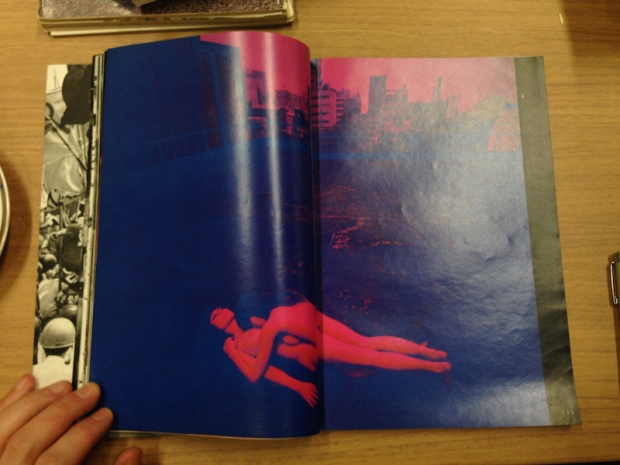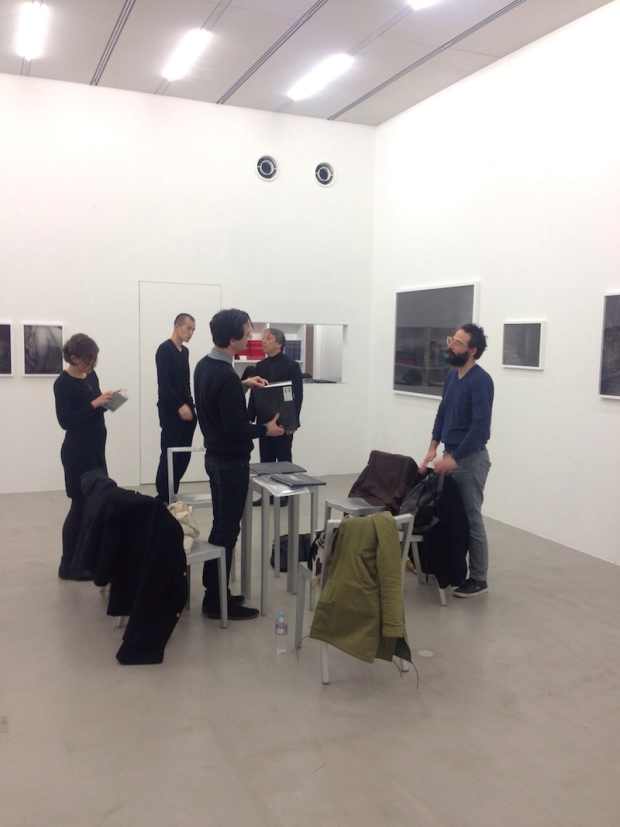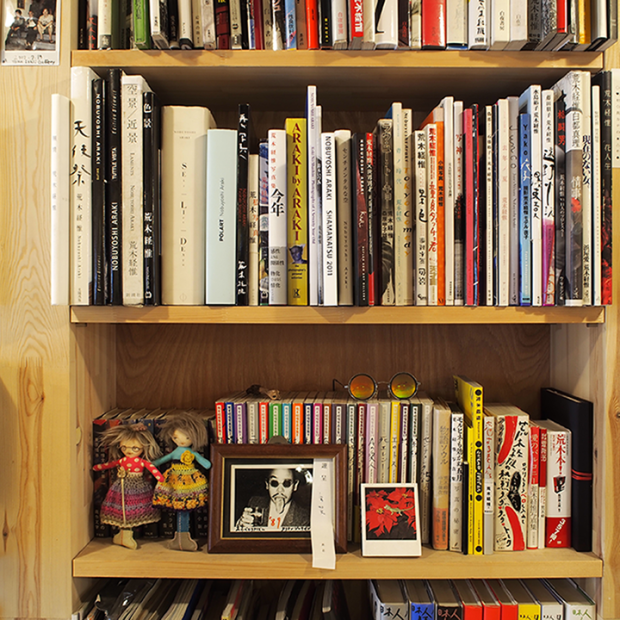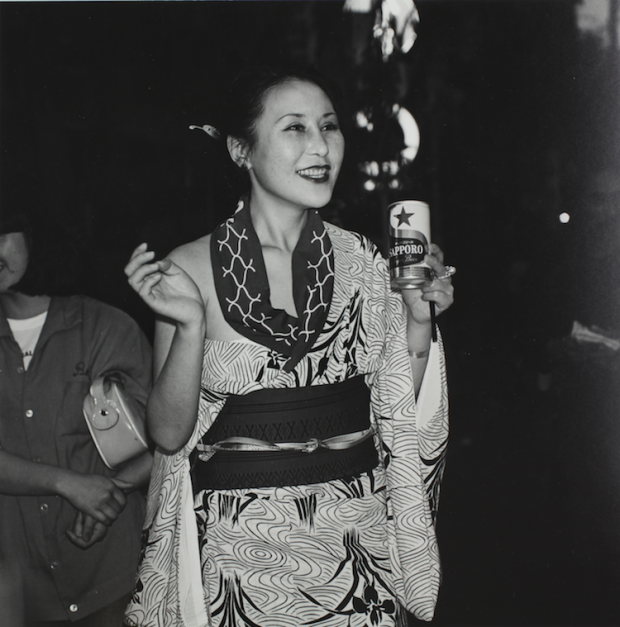Tokyo Diary
Last December, Aperture magazine’s editors spent three weeks in Tokyo researching and assembling our upcoming Summer issue of the magazine, dedicated entirely to photography from Japan. This is Aperture’s second issue to be researched abroad; regular readers may remember last year’s Sao Paulo issue. Producing an international issue is an immersive process, of collecting information, of listening to local stakeholders—art historians, curators, publishers, and of course photographers—to learn about curatorial work and research underway, as well as which ideas are central to the discourse. In meetings we often ask, “What do you think we should publish, or reflect in our pages?” We then try to distill the most exciting work we’ve encountered. Tokyo’s photography scene is vast, diverse, and a little daunting, like the megalopolis. Here, we introduce some of the behind-the-scenes cast, the experts who, often very literally, sagaciously pointed the way. This article first appeared in Issue 5 of the Aperture Photography App: click here to read more and download the app.

A street in Shibuya, early in the morning, December, 2014.
Ivan Vartanian
Ivan is a former Aperture editor, who has lived in Tokyo for more than eighteen years. As an independent publisher and producer, working under the imprint Goliga, he’s worked with legends such as Daido Moriyama as well as the younger generation of image-makers. Originally our “Tokyo” issue was meant to be a modest article on the city’s independent exhibition spaces. But when Ivan described his plans to organize an ambitious conference, in New York, this spring about photography from Japan this spring, and with a number of major U.S. institutions mounting important exhibitions of Japanese photography around the same time, we knew that it was the right moment for this issue. (A grant from the Japan-United States Friendship Commission made the research-trip possible.)
Ivan, an energetic multitasker with a sardonic wit, opened many doors, sharpened our business-card etiquette, and helped introduce us to key fixtures in the Tokyo scene. While discussing possible content for the issue, Ivan mentioned his interest in Japanese photography magazines from the 1960s and ‘70s (not surprising, since he wrote a book on Japanese photography books of the era era—Aperture’s Japanese Photobooks of the 1960s and ’70s, 2009). Look out for his article in this issue on the secret history of Japanese publishing, as told through tech-minded, and sometimes prurient, vintage magazines. In Japan, photography resides on the printed page.

A meeting at the Asahi Camera office. The editors kindly pulled vintage issues for us to review.

A spread from a 1969 issue of Asahi Camera, featuring a photograph by Kishin Shinoyama.
Yoko Sawada
Yoko Sawada’s cramped Ebisu office overflows with books and publishing ephemera; a vintage Nobuyoshi Araki exhibition poster welcomes visitors, once they’ve removed their shoes. If we didn’t know better, we might have suspected Sawada was publishing radical pamphlets. Formerly an editor of Déjà-Vu, a seminal photography magazine published in the 1990s, Sawada now runs an imprint, Osiris, which produces excellent photobooks, including those by Mikiko Hara and, of course, the stunning 2010 reissue of Takuma Nakahira’s For a Language to Come. Sawada helped us coordinate two features on Nakahira, in which we explore the influential Provoke-era photographer and prolific writer on images and media.
Shigeo Goto
Goto runs G/P Gallery, which has two spaces in Tokyo. One more modest space is situated in Ebisu above an excellent bookshop, and a second more capacious space is located in a peripheral warehouse area, where an exhibition of work by rising star Daisuke Yokota was on view when we visited. Goto, who works with a fresh mix of young photographers, spoke at length about photography in Japan, highlighting the idea that schools don’t play a major role in Japan (there’s no equivalent of Yale or Düsseldorf), and walked us through his thinking on photography and animism. Goto emphasized the idea that mutation was a key concept for many Japanese photographers—especially in Tokyo, where the cityscape itself is a shape shifter.

A meeting with Aperture’s editors, Daisuke Yokota, Shigeo Goto, and Ivan Vartanian, at G/P Gallery.
Hisako Motoo
As a publisher, curator, and editor, Motoo is a seasoned player in the Tokyo photo world. She has worked closely with big names like Araki and Daido Moriyama, and recently founded AM Project Space. In this gallery’s dimly lit, cavernous space we saw a dense installation of Araki’s recent collaged Polaroids, featured in the upcoming Aperture issue.

A Polaroid collage by Nobuyoshi Araki, 2014. © Nobuyoshi Araki and Eyesencia, Tokyo.
Taka Ishii
Taka Ishii Gallery is a powerhouse in the Tokyo art world, representing an impressive roster of international artists (Christopher Wool, Thomas Demand, and many others) as well as icons of Japanese photography. Ishii generously spent an afternoon with us, pulling books from his library, including a slim red volume on Minoru Hirata, who documented performance-based art in the late 1960s. Hirata’s book got us thinking about Japan’s history of photography and conceptual practice, during an era of student protest and social unrest—an underexplored area in the United States—and led us to commission an article by Yasufumi Nakamori, who has just curated a landmark exhibition For a New World to Come: Experiments in Japanese Art and Photography, 1968-79, for the Museum of Fine Arts, Houston, which will, thankfully, travel to New York this fall.
Kotaro Iizawa
We had lunch with Iizawa, a scholar of Japanese photography, in his library/café, an elegant, minimal space built of natural wood that houses a
massive library of thousands of photobooks. Iizawa has been building his collection for decades and it is now open to the public. This incredible resource is really a gift: who needs schools, when you can learn the history of Japanese photography in Iizawa’s café?

The Araki section of Kotaro Iizawa’s photobook library. Photograph by Mie Morimoto.
Mutsuko Ota
As the editorial director of IMA, which publishes a photography magazine as well as books, Ota offered a great deal of helpful advice. We also happened to be in Tokyo at the time when IMA’s concept store in Roppongi was opening Aperture’s exhibition of books short-listed for the Paris Photo–Aperture Foundation PhotoBook Awards. Three photographers from Japan were among the finalists for the prize.
The book is the form for photography from Japan, and there’s no better place to look for books than in Jimbocho, a bibliophile’s dream neighborhood. Among other gems of ink-on-paper, we found, in a store specializing in rare maps, an early edition of Issei Suda’s beguiling, square-format photographs exploring folk traditions in late-1970s Tokyo. This reminded us that Suda, a master who was recently the subject of a retrospective exhibition at the Tokyo Metropolitan Museum of Photography, should be introduced (or reintroduced) to Aperture’s readers.

Issei Suda, Asakusa, 1987. Courtesy Miyako Yoshinaga Gallery.
Shashin: Photography from Japan, a symposium, will be held at the New York Public Library on April 24–25. Aperture’s “Tokyo” issue, and the new issue of The Photobook Review, also focused on Japan, will be available there. Additionally, Aperture will be releasing a series of articles on Japanese photography from our archive in the weeks to come.






















